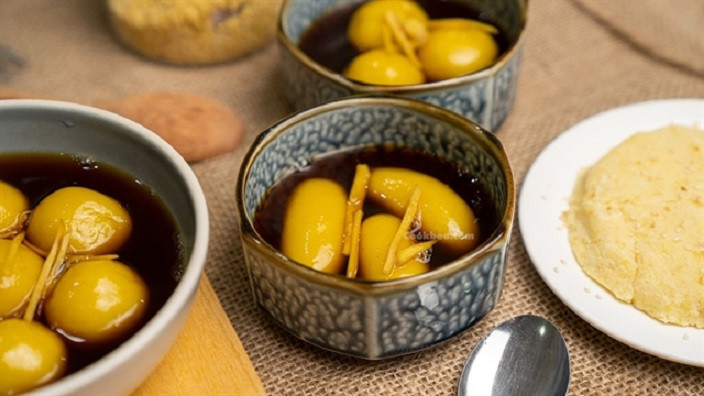
People in the central province of Nghệ An are now preparing ingredients to make bánh ngào (rice balls in molasses syrup) to welcome Tết (Lunar New Year), Việt Nam’s biggest festival, which is more than three weeks away.
Apart from using the sweet soup on Cold Day festival on the third day of the third lunar month, the local delicacy is used to worship Saints, Genies and ancestors on the eve of Tết, to pray for a safe and prosperous year to come, Hà Thị Đường, a local master cook, said.
The main ingredients to make the soup include glutinous rice flour, sugar came molasses, ginger and roasted peanuts.
“The dish has its unique characteristics that many people are very fond of,” Đường said, adding that to make it properly, rice flour is mixed with water to make dough, and then the dough must be kneaded very thoroughly, so it took the name of this action (ngào) as the name of the food," Đường said.
"The dough is then shaped into small balls, and cooked in thin sugar cane molasses syrup so some locations call it bánh mật (molasses cake)."
Đường said she has to choose the molasses very carefully. It should has a yellow colour without burned smell. It is often mixed with pomelo flower essential oil, pandan leaves and ginger.
The rice dumplings have mung bean filling, Đường told Việt Nam News, noting that to make a perfect bánh ngào, the key is to choose quality and fragrant sticky rice.
“In the past, we had to grind the rice in a stone grinder by hand so the work was rather hard and took long time, compared with now when modern machines help us have rice flour more easily,” Đường said.
However, all family members were happy to wait for the delicious dish, even if they had to wait for a long time, she said.
She said she would never forget these old days in her childhood, living in the same house with her brothers and sisters, when they all were interested in kneading the dough into round or oval balls.
“While we were kneading the balls, my mother would go out to our garden to get fresh ginger, wash it and cut it into threads," Đường said.
“When the kneading of the balls was completed, my mother boiled them in molasses for five-seven minutes then put the ginger threads in the pot before scooping it to a big bowl or a big plate to place it on our altar to worship our ancestors first,”
Đường said it is more enjoyable to eat the dish hot.
“You will get the best aroma from the glutinous rice, fragrant warmth from ginger as well as buttery fat from roasted peanuts,” she said.
She said that during the Lunar New Year days, when the weather is still cold, gathering with family and enjoying the dish, you will feel very happy, your heart warm and your body full of energy to welcome the occasion of great festivity.
Nguyễn Bích Liên, who just returned to her Nghệ An home village from Germany, said that, more than a food, bánh ngào has become a warm memory of home for overseas Vietnamese like her.
“We enjoyed bánh ngào every Tết holiday, so each time mentioning the name of the dish, my heart is filled with memories of Tết, and of the sweet and spicy flavour of the delicacy that I will never forget,” Liên said. VNS